- Yachting World
- Digital Edition


World’s coolest yachts: Tornado catamaran
- April 20, 2021
We ask top sailors and marine industry gurus to choose the coolest and most innovative yachts of our times. This month, Carolijn Brouwer nominates the Tornado catamaran

“The Tornado catamaran is a really cool boat. It was my introduction to high performance sailing and it had a big influence on me in many ways.
“Once you get a taste for it, there is no way back. Sailing the Tornado opened up different doors for me in my sailing career,” says Carolijn Brouwer .
The Tornado catamaran was for many years the fastest Olympic sailing class and was the first catamaran to be introduced to the Olympic Games. It was first sailed in the 1976 Olympic Games and saw its last Olympic appearance in 2008.

There was not multihull option for sailing at the Olympic Games in 2012, but the Tornado undoubtedly led the way for the current catamaran class, the Nacra 17, which must be sailed with a female and a male member of the crew.
“Sailing the Tornado is where I got the feel for apparent wind sailing. It’s a pretty big cat in the small boat sailing world with its 20ft length and 10ft width creating decent loads and righting moment.
“Also, the Tornado was the only Open discipline at the Olympic Games but it was extremely male dominated.”
Brouwer helmed for Belgium at the 2008 Games, sailing a Tornado catamaran with crew Sébastien Godefroid. “I hope this showed that being a woman you can compete at a high level and be very competitive against men in a mixed gender configuration – just like the great Paul Elvstrøm did sailing with his daughter.”
Tornado catamaran stats rating:
Top speed: 20 knots LOA: 20ft/6.1m Launched: 1967 Berths: 0 Price: £23,000 Adrenalin factor: 70%
Carolijn Brouwer
A three-time Whitbread/Volvo Ocean Race crew, Carolijn Brouwer is also a three-time Olympian. She was born in the Netherlands and represented the country at the 2000 and 2004 Olympics in first the 470, and then the Europe. She then switched to the Tornado, representing Belgium in 2008, when she finished 12th.
If you enjoyed this….
Yachting World is the world’s leading magazine for bluewater cruisers and offshore sailors. Every month we have inspirational adventures and practical features to help you realise your sailing dreams. Build your knowledge with a subscription delivered to your door. See our latest offers and save at least 30% off the cover price.

- CLASSIFIEDS
- NEWSLETTERS
- SUBMIT NEWS

The Tornado was designed specifically for Olympic competition and made a first Games appearance in 1976. It has become a successful international class on its own merits and enhanced by rig upgrades it remains the fastest, most spectacular of the Olympic boats. Equipped with over 49sqm of sail area, twin trapeze, and asymmetric spinnaker, the boat is capable of an incredible 30 knots. The class has seen a resurgence in the UK in the past few years with new boats being built again in the UK by Graham Eeles in Brightlingsea. The class association (UKITA) is very active - there are regular long-distance and open meetings for the the Tornado in the UK and a spectacular national championships. by Paul Mines
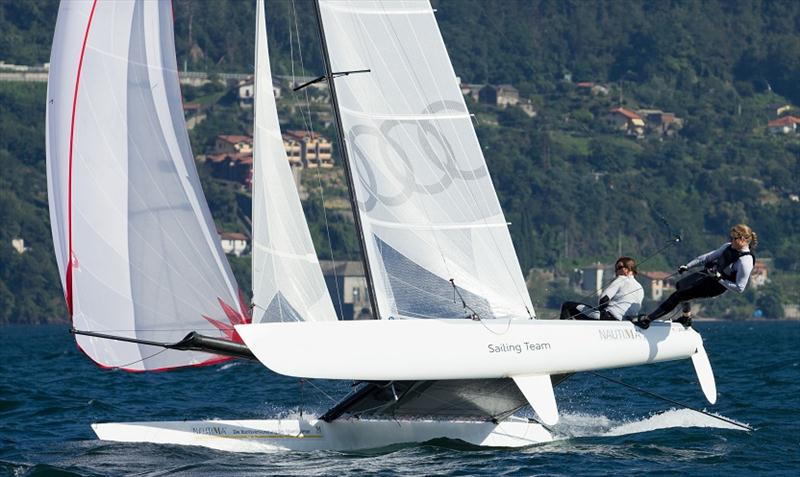
- Latest videos, from 2020
Show photos from latest 2024 2023 2022 2021 2020 2019 2018 2017 2016 2015 2014 2013 2012 2011 2010 2009 2008 2007 2006 2005 2004 2003 2002 2001 2000 1999 1998 1997 1996 1995

Great choice! Your favorites are temporarily saved for this session. Sign in to save them permanently, access them on any device, and receive relevant alerts.
- Sailboat Guide
Tornado Catamaran
Tornado Catamaran is a 20 ′ 0 ″ / 6.1 m catamaran sailboat designed by Reg White and Rodney March and built by Sailcraft Ltd., Marstrom Composite AB, and Windrush Yachts starting in 1966.

Rig and Sails
Auxilary power, accomodations, calculations.
The theoretical maximum speed that a displacement hull can move efficiently through the water is determined by it's waterline length and displacement. It may be unable to reach this speed if the boat is underpowered or heavily loaded, though it may exceed this speed given enough power. Read more.
Classic hull speed formula:
Hull Speed = 1.34 x √LWL
Max Speed/Length ratio = 8.26 ÷ Displacement/Length ratio .311 Hull Speed = Max Speed/Length ratio x √LWL
Sail Area / Displacement Ratio
A measure of the power of the sails relative to the weight of the boat. The higher the number, the higher the performance, but the harder the boat will be to handle. This ratio is a "non-dimensional" value that facilitates comparisons between boats of different types and sizes. Read more.
SA/D = SA ÷ (D ÷ 64) 2/3
- SA : Sail area in square feet, derived by adding the mainsail area to 100% of the foretriangle area (the lateral area above the deck between the mast and the forestay).
- D : Displacement in pounds.
Ballast / Displacement Ratio
A measure of the stability of a boat's hull that suggests how well a monohull will stand up to its sails. The ballast displacement ratio indicates how much of the weight of a boat is placed for maximum stability against capsizing and is an indicator of stiffness and resistance to capsize.
Ballast / Displacement * 100
Displacement / Length Ratio
A measure of the weight of the boat relative to it's length at the waterline. The higher a boat’s D/L ratio, the more easily it will carry a load and the more comfortable its motion will be. The lower a boat's ratio is, the less power it takes to drive the boat to its nominal hull speed or beyond. Read more.
D/L = (D ÷ 2240) ÷ (0.01 x LWL)³
- D: Displacement of the boat in pounds.
- LWL: Waterline length in feet
Comfort Ratio
This ratio assess how quickly and abruptly a boat’s hull reacts to waves in a significant seaway, these being the elements of a boat’s motion most likely to cause seasickness. Read more.
Comfort ratio = D ÷ (.65 x (.7 LWL + .3 LOA) x Beam 1.33 )
- D: Displacement of the boat in pounds
- LOA: Length overall in feet
- Beam: Width of boat at the widest point in feet
Capsize Screening Formula
This formula attempts to indicate whether a given boat might be too wide and light to readily right itself after being overturned in extreme conditions. Read more.
CSV = Beam ÷ ³√(D / 64)
The TORNADO first appeared as winner of the 1967 international “B” class catamaran trials. It was an Olympic class from 1976-2008. The class rules were changed to allow twin trapezes, ‘flat head’ mainsail, and asym. spinnaker.(2004?)
Embed this page on your own website by copying and pasting this code.
- About Sailboat Guide
©2024 Sea Time Tech, LLC
This site is protected by reCAPTCHA and the Google Privacy Policy and Terms of Service apply.

Published on June 1st, 2021 | by Editor
Tornado: World’s coolest yachts
Published on June 1st, 2021 by Editor -->
Yachting World has been asking top sailors and marine industry gurus to choose the coolest and most innovative yachts of our times , and two-time World Sailor of the Year Carolijn Brouwer nominated the Tornado catamaran. The Scuttlebutt editor concurs the Tornado is one of the sweetest boats he’s ever sailed… here’s the report :
“The Tornado catamaran is a really cool boat. It was my introduction to high performance sailing and it had a big influence on me in many ways,” said the Dutch three-time Whitbread/Volvo Ocean Race crew and three-time Olympian.
“Once you get a taste for it, there is no way back. Sailing the Tornado opened up different doors for me in my sailing career.”
The Tornado catamaran was for many years the fastest Olympic sailing class and was the first catamaran to be introduced to the Olympic Games. It was first sailed in the 1976 Olympic Games and saw its last Olympic appearance in 2008.

There was not multihull option for sailing at the Olympic Games in 2012, but the Tornado undoubtedly led the way for the current catamaran class, the Nacra 17, which must be sailed with a female and a male member of the crew.
“Sailing the Tornado is where I got the feel for apparent wind sailing. It’s a pretty big cat in the small boat sailing world with its 20ft length and 10ft width creating decent loads and righting moment.
“Also, the Tornado was the only Open discipline at the Olympic Games but it was extremely male dominated.”
Brouwer helmed for Belgium at the 2008 Games, sailing a Tornado catamaran with crew Sébastien Godefroid. “I hope this showed that being a woman you can compete at a high level and be very competitive against men in a mixed gender configuration – just like the great Paul Elvstrøm did sailing with his daughter.”
For Yachting World’s list of cool boats, click here .

Tags: Carolijn Brouwer , coolest yachts , Tornado , Yachting World
Related Posts
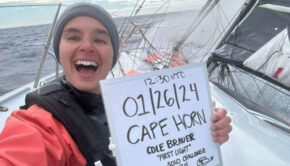
Ten women doing great things →
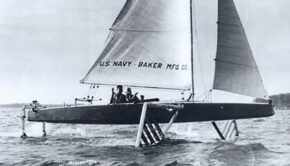
Monitor: World’s coolest yachts →
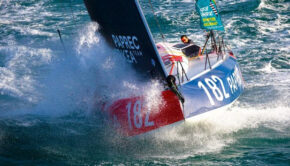
Class40 Lift 2: World’s coolest yachts →
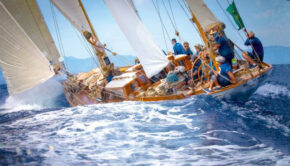
Extraordinary boats: Baruna’s seven-year restoration →
© 2024 Scuttlebutt Sailing News. Inbox Communications, Inc. All Rights Reserved. made by VSSL Agency .
- Privacy Statement
- Advertise With Us
Get Your Sailing News Fix!
Your download by email.
- Your Name...
- Your Email... *
- Name This field is for validation purposes and should be left unchanged.

Browse by Category
- Coach of the Year
- High School Sailing Team of the Year
- Optimist Sailor of the Year
- Sailing Fitness
- Regatta News/Results
- Boat Speed/Tuning/Sailtrim Articles
- General Sailing News
- Coaches Locker Room
- From the Experts
- Profiles in Pro Sailing
- Featured Jobs
- Marketplace Ads
- Skip to primary navigation
- Skip to main content
- Skip to primary sidebar
- Skip to footer
Sail1Design
First Name*
Email Address*
November 30, 1999 by Sail1Design Editor Leave a Comment
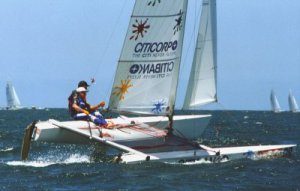
The Tornado was designed in the autumn of 1967 by Rodney March from England, with help from Terry Pierce, and Reg White, specifically for the purpose of being the new Olympic Catamaran, which was to be selected by the IYRU in an Olympic Catamaran Trials. The boat was developed mainly in Brightlingsea, England.
International Status was granted to the Tornado as a result of its outright winning of the IYRU Trials held in England. The next step, adding the Catamaran event to the Olympic program, occurred two years later, with the result that the first Catamaran event, sailed in 1976 in Canada, was sailed in the Tornado. The Tornado is an outstanding example of a class that was designed specifically for Olympic competition that has become a successful International class on its own merits.
2000 Olympic Silver Medalists: Darren Bundock and John Forbes (AUS)The Tornado has since remained unchallenged as the ultimate one-design catamaran. With its modern, stylish rigging and sleek lines the Tornado is quick to catch the eye of any water-drawn on-looker as it speeds across harbors, lakes, and oceans in over 30 countries around the world. With its ability to reach speeds of 15-18 knots upwind and downwind, and 33+ knots reaching, the Tornado is truly the purists’ speed machine.
Over 4,800 Tornados have been built, with 1,200 class association members worldwide. In 2004, on the Saronikos Gulf in Greece, the Tornado will be sailing in its seventh Olympic Games.
Except for refinements in technical details – improvements in hull, sail, and spar technology, better blocks and lines – the Tornado was unchanged from its beginnings in to the early 90’s. Then, as a result of the increasing popularity of other, smaller catamarans, the Tornado class undertook a major development program in 1993. It was specifically to respond to a request from the IYRU to search for ways to improve the public and media awareness of the sport of yachting, and secondarily to answer the possible challengers to its ‘top cat’ role.
Two weeks of intensive on-the-water testing and development took place in Miami, following considerable discussion and planning. Among the participants were the three medalists from Barcelona as well as designer Reg White. The International Tornado Association spent nearly US$22,000 on the testing, evaluation, reporting, and finally balloting process to the class membership, to find the fairest and best ways to improve the class and the sport in ways acceptable to the sailors.
The testing involved 10 standard and fully competitive Tornados, one boat with a larger main and jib, and two boats with a variety of sailplans that included spinnakers of up to 32 sq. M. Fourteen races were run over the testing period in addition to in-line speed and handling evaluations.
As part of the testing process, new courses were also used, most involving a leeward gate.
Following the testing and regatta, the following points were clear; the larger main/jib combination was only marginally faster than the standard rig, and the spinnaker boats were a surprise, only beating the standard rigs in 2 of the 14 races. The ITA then balloted the class membership, with not only the conclusions but also all of the data and the testing procedure, helping to provide insights to the rig selection process.
A two-thirds majority is required by the class constitution to implement any change; this majority was not reached, the class voting against the expense of a change with no real benefit to sailing. Thus the class retained the same sailplan for the next two Olympics. The course changes, giving the possiblity of better spectator access and greater media coverage, received the votes necessary to be adopted by the class.
The Class felt then that the changes in course, rather than changes in the equipment, would have a greater impact on public awareness and media coverage. Courses are adjustable in length for wind, thus giving a fixed racing time for the event, and the shorter-than-before course also tend to keep the boats closer, making the racing more exciting and more easily viewed. The fixed Start/Finish lines also is a help, allowing faster turn-around times between races. The new course formats have been in use in the World Championship beginning in ’93, and have proven popular with both the sailors and committees, and are continued today.
The issue of changes in the boat were revisited in 1999, when the ISAF decided to have a Multihull Evaluation Trials in France to look at “possible replacements” in the Olympic program for the Tornado. At the time, there were a number of technical changes in materials that allowed for better spinnakers, and better control, and there were then a number of successful double-trapeze plus spinnaker catamarans on the market in the Tornado size range – 20 feet – that were becoming popular.
The Trials were interesting. Except for the custom, all-carbon Marstrom 20, the standard Tornado dominated upwind, beating all production challengers from Hobie, Nacra, Mystere, and others. Only by piling on sail area, plus a spinnaker, were any of the challengers able to beat the Tornado around the race course, and even then the advantage disappeared as the wind increased. But the extra athleticism needed to sail with a double trapeze, and the extra visual interest provided by the spinnakers, was undeniable, and the final outcome was that the ISAF decreed that the equipment for the 2004 Olympics would be the “Tornado with double trapeze and spinnaker”, and left it up to the class how to implement the changes.
The class took an approach that allowed some development and testing, with the goal of keeping crew weight in the same range as with the old rig. The final result, approved by the class in early 2001, were both evolutionary and radical. First was a new mainsail with a flat top and more area, providing more heeling moment to compensate for the double instead of single trapeze and help keep crew weights with the same range. Second, done to clear the trampoline to make spinnaker work possible, was to redesign the jib. The new jib had the same area, but was longer on the luff and shorter on the foot to allow it to be sheeted to the main beam. Interestingly, this change, moving the sail area forward, overcame one of the Tornado’s handicaps, tacking, and made this maneuver much easier. The innovation of a self-tacking jib appeared later in 2001, and was quickly adopted by the entire fleet. Finally, of course, there was the spinnaker, and the class set only size limits, allowing the question of spinnaker handling equipment to be settled on the race course. Again, the advantages of spinnaker launching tubes quickly established themselves, and became a class standard. Interestingly, the two biggest boathandling improvements, the self-tacking jib and the spinnaker tubes, were quickly adopted by the classes below the Tornado, especially the International Formula 18, which was becoming the Tornado trainer for future Olympians.
Class website: http://www.tornado.org/
Reader Interactions
Leave a reply cancel reply.
Your email address will not be published. Required fields are marked *
By submitting this form, you accept the Mollom privacy policy .

One Design Classes
Browse the airwaves.
- Sailing News Articles
- High School & College News Articles
- One-Design Class Profiles
- Tactics & Strategy
- Sailing & Education
- ICSA Rankings
- Sailing/Yacht Club Profiles
- Youth Sailor of the Year
- Sail1Design Annual Awards
Helpful Links
- Join the S1D Team
- Accessibility Help
- Privacy Policy
- Entries feed
- Comments feed
- WordPress.org
Sail optimization for upwind sailing: application in a Tornado, the Olympic class catamaran
- Original Article
- Published: 31 July 2008
- Volume 13 , pages 190–206, ( 2008 )
Cite this article
- Ana Laverón-Simavilla 1 ,
- Victoria Lapuerta 1 ,
- Sebastián Franchini 1 &
- Angel Sanz 1
1672 Accesses
2 Citations
Explore all metrics
A study of a boat's motion is carried out in order to analyze the aerodynamic properties of the optimal sail for obtaining the maximum velocity when sailing to windward. The mechanics study shows the optimal C L and C D for a given sail and how the shape of the aerodynamic polar of the sail should be. A parametrical analysis of the aerodynamics of a sail is then carried out varying the maximum camber, position of the maximum camber in the chord direction and position of the maximum camber in the mast direction. The parametric analysis is done numerically with a vortex lattice method (VLM) and experimentally in a wind tunnel. The results show that the influence of the relevant parameters studied can be reduced to the variation of two parameters, A and B , defining the polar of the sail, C D = B + A 2 C L 2 ; and the influence of parameters A and B on the maximum VMG obtainable are calculated.
This is a preview of subscription content, log in via an institution to check access.
Access this article
Price includes VAT (Russian Federation)
Instant access to the full article PDF.
Rent this article via DeepDyve
Institutional subscriptions
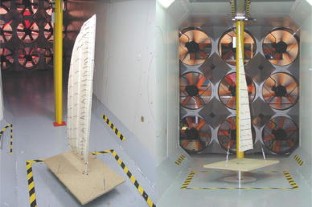

Similar content being viewed by others

Encore: Sailing; Aerodynamics Plus Hydromechanics

Battens Modelling and Optimization in Air-Sail Interaction Analysis
Fluid–structure interaction of downwind sails: a new computational method.
A. Cirello, F. Cucinotta, … F. Sfravara
Abbreviations
coefficient of the polar of the sail defined as \( C_{{\text{D}}} = B + A^{2} C_{{\text{L}}}^{2} \)
profile chord
drag coefficient
hydrodynamic force coefficient in the direction normal to the yacht speed
hydrodynamic force coefficient in the direction of the yacht speed
lift coefficient
optimal sailing lift coefficient
heeling moment coefficient made dimensionless with the apparent wind velocity
heeling moment coefficient made dimensionless with the true wind velocity
chord of the root section of the sail
chord of the tip section of the sail
aerodynamic force
hydrodynamic force
Froud number, \( F_{n} = \frac{{\left| {\vec V_{s} } \right|}}{{\sqrt {gD_{{\text{h}}} } }} ,\) where g is the gravity and D h is the characteristic length scale of hydraulic depth
\( \frac{{\rho _{{{\text{H}}_{ 2} {\text{O}}}} S_{{\text{H}}} }}{{\rho _{{\text{a}}} S_{{\text{A}}} }} \)
maximum camber of the profile expressed as a percentage of its chord length
slope of the twist profile
aerodynamic Reynolds number, \( R_{{n{\text{A}}}} = \rho _{a} \frac{{\left| {V_{{\text{A}}} } \right|\bar C_{{\text{A}}} }}{{\mu _{{\text{A}}} }} \) , being \( \bar C_{{\text{A}}} \) the media chord of the sail and μ A the dynamic viscosity of the water
hydrodynamic Reynolds number, \( R_{{{\it{n}\text{H}}}} = \rho _{{{\text{H}}_{ 2} {\text{O}}}} \frac{{V_{{\text{s}}} L_{{{\text{hull}}}} }}{{\mu _{{{\text{H}}_{ 2} {\text{O}}}} }}, \) being L hull the length of the hull and \( \mu _{{{\text{H}}_{ 2} {\text{O}}}} \) the dynamic viscosity of the air
characteristic area of the sail
characteristic area of the hull
apparent wind speed
Velocity Made Good
velocity made good
yacht speed
air density
water density
angle of attack of the sail
drift angle
aerodynamic efficiency of the sail
hydrodynamic efficiency of the hull
location of the profile with maximum camber along the mast direction as a percentage of the sail span
location of the maximum camber along the chord of the profile expressed as a percentage of the chord
taper ratio
twist angle of each profile
Jackson PS (1985) The analysis of the three-dimensional sails. In: Proceeding of the 10th Canadian congress of applied mechanics
Malpede S, Vezza M (2000) Developments of an interactive sail design method. Acta Polytech 4:66–74
Google Scholar
Sugimoto T (1996) Theory for inextensible and high aspect-ratio sails. J Wind Eng Ind Aerodyn 63:61–75
Article MathSciNet Google Scholar
Couser P (1998) Computational methods for investigating sail forces—a case study. Yacht Vision ‘98, Auckland, New Zealand, 29th January–1st February
Locke NJ, Jackson PS (1996) Lift and drag distributions of yacht sails using wake surveys. J Fluid Eng 118:346–351
Article Google Scholar
Sparenberg JA, Wiersma AK (1976) On the maximum thrust of sails by sailing close to wind. J Ship Res 20:98–106
Flay RGJ, Locke NJ, Mallinson GD (1996) Model test of twisted flow wind tunnel designs for testing yacht sails. J Wind Eng Ind Aerodyn 63:155–169
Flay RGJ (1996) A twisted flow wind tunnel for testing yacht sails. J Wind Eng Ind Aerodyn 63:171–182
Marchaj CA (1979) Aero-hydrodynamics of sailing. Adlard Coles, London
Wood CJ, Tan SH (1978) Towards an optimum yacht sail. J Fluid Mech 85:459–477
Article MATH Google Scholar
Jackson PS (1996) Modelling the aerodynamics of upwind sails. J Wind Eng Ind Aerodyn 63:17–34
Margason RJ, Lamar JE, Vortex–lattice FORTRAN Program for estimating subsonic aerodynamic characteristics of complex planforms, NASA TN D-6142, February, 1971
Download references
Acknowledgments
This work has been sponsored by the Spanish Consejo Superior de Deportes (CSD) and by the Universidad Politécnica de Madrid (UPM) and is part of a more general endeavour for the study of sails design.
Author information
Authors and affiliations.
E.T.S.I. Aeronáuticos, Universidad Politécnica de Madrid, 28040, Madrid, Spain
Ana Laverón-Simavilla, Victoria Lapuerta, Sebastián Franchini & Angel Sanz
You can also search for this author in PubMed Google Scholar
Corresponding author
Correspondence to Victoria Lapuerta .
About this article
Laverón-Simavilla, A., Lapuerta, V., Franchini, S. et al. Sail optimization for upwind sailing: application in a Tornado, the Olympic class catamaran. J Mar Sci Technol 13 , 190–206 (2008). https://doi.org/10.1007/s00773-008-0007-4
Download citation
Received : 05 June 2007
Accepted : 28 February 2008
Published : 31 July 2008
Issue Date : August 2008
DOI : https://doi.org/10.1007/s00773-008-0007-4
Share this article
Anyone you share the following link with will be able to read this content:
Sorry, a shareable link is not currently available for this article.
Provided by the Springer Nature SharedIt content-sharing initiative
- Optimization
- Aerodynamics
- Find a journal
- Publish with us
- Track your research
Academia.edu no longer supports Internet Explorer.
To browse Academia.edu and the wider internet faster and more securely, please take a few seconds to upgrade your browser .
Enter the email address you signed up with and we'll email you a reset link.
- We're Hiring!
- Help Center

Sail optimization for upwind sailing: application in a Tornado, the Olympic class catamaran

2008, Journal of Marine Science and Technology
Related Papers
Journal of Marine Science and Technology
Yusuke Tahara
Yusuke Tahara , Yutaka Masuyama
Hemanth Kumar
International Journal of Heat and Fluid Flow
Patrick Bot
Gianluca Iaccarino
Abstract. Two current Stanford Yacht Research projects are presented, both related to the analysis and design of upwind sails, and part of a larger research effort to develop efficient and robust sail and hull shape optimisation methods. First, we discuss the in-house development of a methodology to predict and improve the flying shape and forces on America's Cup sails. We adapted and parallelized a 3D unstructured incompressible Euler solver developed by Jameson and colleagues.
IOSR Journals
Abstract : To bring down the operating costs in maritime traffic expenditure, the usage of fuel has to be reduced. For this the only possible solution is that to find alternative energy sources. In open sea easily available energy sources are solar energy and wind energy. Among them Wind energy is best suited for serving the purpose due to its availability and ease of transformation. In the present study the effect of wind sail on ship is analysed. Wind sail was modelled numerically using CFD technique. The influence of the main sail design variables such as draft, camber and angle of attack due to the forces coefficients of sail. One sail model was developed, and sail model was simulated at an 90 °angle of attack for maximum thrust .And conduct structural analysis for the sail model. Keywords :CFD, FEM , Mast , Sail ,Wind energy
Proceedings of the 2nd High Performance Yacht Design Conference
Sara Muggiasca
Ocean Engineering
Peter Vidmar , Marko Perkovic
The research explained in this paper was carried out to investigate the efficiency of different steering systems on sailing yachts. The steering system of a sailing yacht mostly includes a simple steering system and a hydrodynamic shaped single rudder, or multiple rudders, depending on boat characteristics. One of the basic design guidelines for fast sailing yachts involves reducing the wetted surface to the minimum allowed by the dynamic stability while maintaining the optimal sailing performances. Deficiencies of different steering systems are discussed and their influences on total lift and yaw moments; yacht manoeuvrability in different sailing directions is also analysed. The discussion is focused on steering systems applicable in practice and accepted by the yacht-building industry, although several innovations may be found that remained in their development stage because of their complexity in construction, maintenance, use itself and reliability. The canting rudder is analys...
Marine Technology and SNAME News
Patrick Chassaing
Viscous computational fluid dynamics based on Reynolds averaged Navier-Stokes (RANS) equations have been used to simulate flow around typical mast-sail geometries. It is shown how these advanced numerical methods are relevant to investigate the complexity of such strongly separated flows. Detailed numerical results have been obtained and compared to experimental ones. Comparative analysis has shown that RANS methods are able to capture the main flow features, such as mast-flow separation, recirculation bubble, bubble reattachment through a laminar-turbulent transition process, and trailing-edge separation. A second part has been devoted to the comparative behavior of these flow features through parameters variations to evaluate the qualitative and quantitative capabilities of RANS methods in mast-sail design optimization. The last part illustrates through two examples how RANS methods may be used to optimize the design of mast-sail geometries and evaluate their relative performances.
RELATED PAPERS
Endokrynologia Polska
Ismet Tamer
Revista Tecnologia e Tendências
milton Beltrame Jr
Behaviour Change
Matthew Sanders
Drug and Alcohol Dependence
Jim McVeigh
CHEST Journal
Giuseppe Di Maria
Agricultural Research
andrews opoku
Innate immunity
Shifat Ahmed
Rachel Donsky
Journal of Toxicologic Pathology
Julia Lewandowska
Natalia Sagala,s.pd
European Journal of Trauma and Emergency Surgery
Jaume Mesquida
Proceedings of the 2007 symposium on Dynamic languages - DLS '07
sebastian leonardo cardenas gonzalez
Tanja Nikolic
Kardi Somerfield
lourdes lara
The American Journal of Clinical Nutrition
Barbara Rolls
EMBO reports
Journal of Clinical Oncology
Dolores López-terrada
Scandinavian Journal of Clinical and Laboratory Investigation
Christian Cook
Silvia Tena
Journal of International Analytics
International Urology and Nephrology
Deepak Batura
International Journal of Business and Management
Rajat Mishra
Pensamiento palabra y obra
Bernardo A. Ciro-Gómez
Electronics
Hans Emmnuel Poma Lopez
See More Documents Like This
RELATED TOPICS
- We're Hiring!
- Help Center
- Find new research papers in:
- Health Sciences
- Earth Sciences
- Cognitive Science
- Mathematics
- Computer Science
- Academia ©2024
Category : Tornado (catamaran)
Media in category "tornado (catamaran)".
The following 15 files are in this category, out of 15 total.

- Sport catamarans
- Olympic sailing classes
- Sailing dinghies
- Uses of Wikidata Infobox
Navigation menu
What type of sailing boats are used at the Olympics?
Ilca 6 and ilca 7.
Designed by Bruce Kirby in 1969, the ILCA 7 contributed to a huge increase in recreational sailing because of its speed, affordability and easy maintenance. Relatively lightweight, the boat is 4.23 meters long (approximately 13 feet 9 inches) with a 7.06 square meter mainsail (approximately 76 square feet).
Making its Olympic debut in 2008, the ILCA 6 is essentially a smaller version of the ILCA 7, using the same fiberglass hull. With a shorter lower-mast and a sail 14 feet smaller than that of the ILCA 7, the boat is more conducive for lighter sailors, making it a great boat for women's racing.
An Olympic class since the Montreal Games in 1976, the boat was originally designed by French architect Andre Cornu in 1963, and was named after its length: 4.70 meters (approximately 15 feet). The two-person centerboard dinghy is malleable to all levels of sailors and is used both recreationally and competitively around the world.
The boat's light frame makes it responsive to movements of the sailors, and thus the skipper and the crew generally complement each other in weight. Three sails are used: the main, jib and spinnaker. Typically taller and heavier than the skipper, the crew hangs out on the trapeze to balance the boat depending on the conditions.
Originally an open-class boat, the event was divided in 1988 when the women's 470 was introduced. Starting at the Paris 2024 Games, the boat will be sailed by a mixed-gender crew for the first time.
NACRA started in the U.S. as an acronym for "North American Catamaran Racing Association" in 1975. Selected by the International Sailing Federation (ISAF) in May 2012 as the equipment for the mixed multihull event, the Nacra 17 made its Olympic Games competition debut at the Rio Games.
The Nacra 17 was created fully in line with the specifications given by ISAF. An agile high speed machine, the hull of the Nacra 17 measures 5.25 meters long (approximately 17 feet, 2 inches), the beam measures 2.59m long (approximately 8-6) and the mainsail has an area of 14.45 square meters (approximately 155 square feet). The curved daggerboards add a distinct dimension to the multihull catamaran making for reduced sheet loads and mitigating the impact of the crew weight.
Designed by Australian Julian Bethwaite specifically for the 2000 Games in Sydney, the 49er is a high speed, high performance boat.
The name of the 49er derives from its hull length of 4.99 meters (approximately 16 feet). A mainsail, jib, and spinnaker comprise the three sails of this two-person skiff. It has twin trapezes and retractable wings that spread 2.74 meters (approximately 9 feet) in width, giving the boat the appearance of a manta-ray. The trapezes allow the crew to use their weight to balance the boat. With a 38 square meter spinnaker area (approximately 409 square feet), it is very large for such a small boat, making the 49er one of the fastest at the Olympics. While its speed is certainly a draw, the 49er is also one of the hardest boats to operate and requires agility and successful teamwork, without which the boat can easily flip.
Developed by Mackay Boats, the FX rig was trialed and selected by the ISAF as the women's 49er event for the Rio Games. The FX was specifically designed to accommodate lighter crews and be perfectly suited for the 49er hull. Similar to its 49er counterpart, the 49erFX is a high performance skiff that demands athleticism, skill and balance. The FX mast height is 7.5 meters (approximately 24 feet), with the mainsail measuring 13.8 square meters (approximately 149 square feet).
What type of boards are used at the Olympics?
iQFoil is the newest windsurfer class and will make its Olympic debut at the 2024 Paris Olympics, replacing the RS:X class, which had been a staple of Olympic windsurfing for years. It involves windsurfers equipped with hydrofoils, known as foiling boards, which lift the board out of the water to reduce drag and increase speed. The average speed of the iQFoil is approximately 42 km/h (26 mph), which is significantly faster than the RS:X. In order to achieve maximum speeds, a high level of focus on balancing the board is essential.
The iQFoil performs best in light winds. The board is wider and shorter than the RS:X, making it compact and agile.
IKA Formula Kite
Also making its Olympic debut in Paris is the kiteboarding class Formula Kite. Similar to the iQFoil, Formula Kite also involves hydrofoils. Kiteboarders use a large controllable kite to propel themselves across the water on a small surfboard-like board. The design of Formula Kite boards prioritizes stability, control, and efficiency, enabling competitors to maneuver quickly and smoothly across the water while harnessing the power of the kite.
The boards are typically lightweight and highly responsive, allowing for precise control during the race.
Frequently Asked Questions
Do olympic sailors use their own boats.
Typically, all boats and equipment are provided by the organizing committee of the Olympic Games or by event organizers. For each class or event, a fleet of class-approved boats are made available for training and racing. This ensures a level playing field for all. However, competitors may bring their own personal equipment, such as sails, rigging, and personal gear.
What equipment is used for Olympic sailing?
In addition to the boats or boards used at the Olympics, competitors also use sails and rigging specific to their boat. (These include mainsails, jibs, the mast, the boom and rigging components like sheets, halyards, and control lines.)
Competitors are also required to wear appropriate safety gear including personal flotation devices, wetsuits or drysuits, and helmets in some classes. Competitors may also use GPS devices and radios to aid in racing and communication with support boats or race officials.
Note: Some components of NBCOlympics.com may not be optimized for users browsing with Internet Explorer 11, 10 or older browsers or systems.
World Champions
History of Tornado World Champions from 1968 through to today along with locations and competitor numbers where they are available.
WOULD YOU LIKE TO BE MEMBER OF THE TORNADO CLASS?
Meet the tornado.
Heartland National Duals
War at the shore, black hills & aau folkstyle nationals, flowrestling radio live, midwest classic nationals, journeymen world classic duals, wolf classic kickoff, coppell spring jam, 2024 scc women`s wrestling open, 2024 pittsburgh wrestling classic, nywa mn youth state, reno worlds, european qualifiers, nhsca high school nationals, u15, u17 & u19 canadian wrestling champ, 2024 last chance olympic team trials qualifier entires, the entries for the 2024 last chance olympic team trials qualifier..

The 2024 Last Chance Olympic Team Trials Qualifier is set to take place April 6-7 in Fairfax, Virginia. This event will feature some of the country's best wrestlers, with the winners at each weight qualifying for the 2024 Olympic Trials. Check out the entries for this event in the below article.
2024 Last Chance OTT Qualifier
Men's freestyle, women's freestyle, men's greco-roman.
*The above entries are from USA Wrestling and will be updated daily
- International
- USA Wrestling
Related Content

Mar 29, 2024
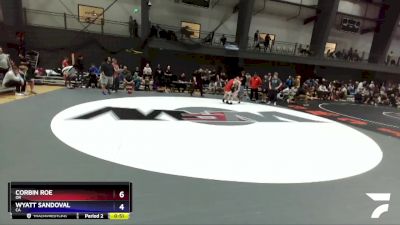
Mar 24, 2024
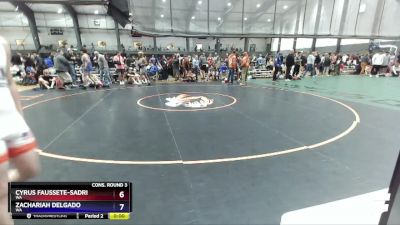

IMAGES
VIDEO
COMMENTS
The Tornado is a double handed multihull class recognised as an International Class by the International Sailing Federation. ... Design One hull flying. The boat was designed in 1967 by Rodney March from the Isle of Sheppey, England. At the IYRU Olympic Catamaran Trials for international status, where it defeated other catamarans.
The Tornado Olympic Catamaran has a 30 plus year history, beginning with its inception in 1967 and continuing through to the present day as a legendary sailing vessel. 1967 - 1976Inception and Olympic DebutThe Tornado was designed in 1967 by Rodney March, Terry Pierce, and Reg White in England specifically for Olympic catamaran competition.It gained
1997-2003A Brief Tornado History. The Tornado was designed in the autumn of 1967 by Rodney March from England, with help from Terry Pierce, and Reg White, specifically for the purpose of being the new Olympic Catamaran, which was to be selected by the IYRU in an Olympic Catamaran Trials. The boat was developed mainly in Brightlingsea, England.
The Tornado was designed in 1967 by Rodney March from the Isle of Sheppey, England, specifically to be the Olympic Class catamaran. It easily defeated the other challengers in a selection event in England in the same year, and sailed its first Olympics in 1976.
The Tornado catamaran was for many years the fastest Olympic sailing class and was the first catamaran to be introduced to the Olympic Games. It was first sailed in the 1976 Olympic Games and saw ...
The TORNADO first appeared as winner of the 1967 international "B" class catamaran trials. It was an Olympic class from 1976-2008. The class rules were changed to allow twin trapezes, 'flat head' mainsail, and asym. spinnaker.(2004?)
Tornado. Sporty small catamarans, such as the Hobie Cat and the Dart, hit the regatta scene in the 1960's. The IYRU announced B-cat trials in 1967, and the clear winner was the Tornado, designed by Englishman Rodney March.The class caught on well, and five years later got the nod as the Olympic catamaran, debuting in Kingston in 1976.
The Tornado was the first multi-hull, or catamaran, class to be raced at the Olympics and was added to the Olympic program in 1976. The boat is a two-person, two-hull catamaran that raced at the Olympics from 1976-2008. The class was designed by Rodney March in 1967 and the boat won IYRU (International Yacht Racing Union) trials to be selected ...
The Tornado was designed specifically for Olympic competition and made a first Games appearance in 1976. It has become a successful international class on its own merits and enhanced by rig upgrades it remains the fastest, most spectacular of the Olympic boats.
Tornado Catamaran is a 20′ 0″ / 6.1 m catamaran sailboat designed by Reg White and Rodney March and built by Sailcraft Ltd., Marstrom Composite AB, and Windrush Yachts starting in 1966. ... The TORNADO first appeared as winner of the 1967 international "B" class catamaran trials. It was an Olympic class from 1976-2008. The class rules ...
The Tornado catamaran was for many years the fastest Olympic sailing class and was the first catamaran to be introduced to the Olympic Games. It was first sailed in the 1976 Olympic Games and saw ...
The Tornado is an outstanding example of a class that was designed specifically for Olympic competition that has become a successful International class on its own merits. 2000 Olympic Silver Medalists: Darren Bundock and John Forbes (AUS)The Tornado has since remained unchallenged as the ultimate one-design catamaran.
The sail geometry of a Tornado, the Olympic class catamaran, has been obtained from a three-dimensional analysis based on photographs of the craft taken while it was sailing to windward. The geometry has been characterized by a set of parameters, some of which are later modified in order to study their influence on the sail performance.
The Tornado catamaran was used as the subject for these investigations and the aim of this research was to write a velocity prediction program for the Olympic variant Tornado class catamaran yacht.
The Tornado was designed in 1967 by Rodney March from the Isle of Sheppey, England, specifically to be the Olympic Class catamaran. It easily defeated the other challengers in a selection event in England in the same year, and sailed its first Olympics in 1976.
Representing United Kingdom. Olympic Games. 1976 Montreal. Tornado. Reginald James White ( 28 October 1935 - 27 May 2010 ), usually Reg White, was an English boat builder, sailor, Olympic champion and world champion. He won a gold medal in the Tornado class with John Osborn at the 1976 Summer Olympics in Montreal. [1]
The Tornado class is a two-person catamaran that achieves very high speeds. It was added in 1976 to the assortment of boats in the Olympic Event overseen by the International Sailing Federation. The Tornado was designed in the autumn of 1967 by Rodney March from England, with help from Terry Pierce, and Reg White, specifically for the purpose ...
Sail optimization for upwind sailing: application in a Tornado, the Olympic class catamaran Ana Laveron-Simavilla • Victoria Lapuerta Sebastian Franchini • Angel Sanz Abstract A study of a boat's motion is carried out in CHX hydrodynamic force coefficient in the direction order to analyze the aerodynamic properties of the optimal normal to ...
Saturday, August 27, "Tornado" World Championships organized by the YCGM. This former Olympic Catamaran class is honored this year in La Grande-Motte. About thirty boats are present at the club and among them, more than 10 different nationalities. After a first training races which took place on Sunday 28th of August, the YCGM organization ...
Tornado. When the International Olympic Committee allowed an extra class into the Olympic Games in 1976, the ISAF decided that this should be a multihull. The Tornado was designed in 1967 by Rodney March, Terry Pierce, and Reg White, specifically for the purpose of being the new Olympic Catamaran and was chosen by the ISAF.
English: The Tornado is an olympic class sailing catamaran, with a crew of two. Tornado type of racing sailboat. Upload media Wikipedia. Instance of: olympic sailing class; international class ... Media in category "Tornado (catamaran)" The following 15 files are in this category, out of 15 total. 1980 Tornado Positions during the serie.png 483 ...
Sail optimization for upwind sailing: application in a Tornado, the Olympic class catamaran Ana Laveron-Simavilla • Victoria Lapuerta Sebastian Franchini • Angel Sanz Abstract A study of a boat's motion is carried out in order to analyze the aerodynamic properties of the optimal sail for obtaining the maximum velocity when sailing to windward.
An Olympic class since the Montreal Games in 1976, the boat was originally designed by French architect Andre Cornu in 1963, and was named after its length: 4.70 meters (approximately 15 feet). ... 14.45 square meters (approximately 155 square feet). The curved daggerboards add a distinct dimension to the multihull catamaran making for reduced ...
Silver. Bronze. 2023. Dervio (ITA) 30 Boats. Yoann Trécul (FRA) Thomas Ferrand (FRA) Kohlendorfer Angelika (AUT) Calvin Claus (AUT)
Mar 26, 2024 by Jon Kozak. The 2024 Last Chance Olympic Team Trials Qualifier is set to take place April 6-7 in Fairfax, Virginia. This event will feature some of the country's best wrestlers ...